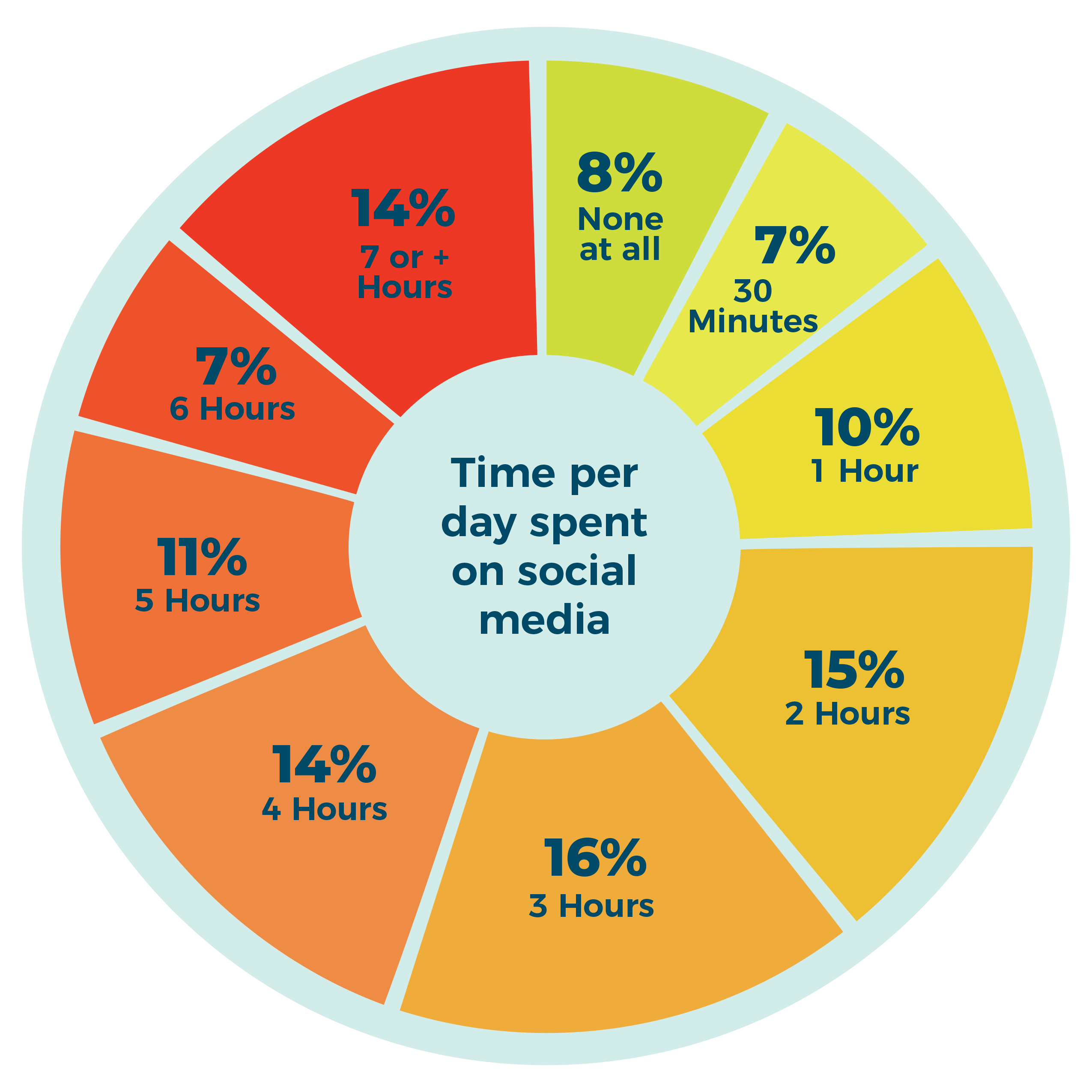The following observations are drawn from the results of the grades 6 to 12 survey, with a special focus on mental health and substance use.
Youth’s ability to adapt to challenges is going down, while the percentage of youth who struggle with their mental health is steadily rising.
From 2015-2016 to 2022-2023, the percentage of youth with a high or moderate level of resilience (the ability to adapt to challenges by using internal and external resources) decreased from 73.0% to 65.2%. During the same period, the percentage of youth with a high level of mental fitness (a person’s basic psychological needs being met by family, friends, and school) decreased from 25.1% to 19.5%. Additionally, the percentage of youth who reported having symptoms of anxiety or depression in the last 12 months increased from 39.5% in 2015-2016 to 55.8% in 2022-2023.
Youth who identify as non-binary 1 and those with a 2SLGBTQIA+2 status: Compared to their peers, a smaller percentage have a high or moderate level of resilience or a high level of mental fitness, and they report worse mental health.
Only 34.9% of non-binary youth and 46.9% of youth with a 2SLGBTQIA+ status have a high or moderate level of resilience, and only 6.6% of non-binary youth and 11.3% of youth with a 2SLGBTQIA+ status have a high level of mental fitness. Moreover, 85.4% of non-binary youth and 78.0% of youth with a 2SLGBTQIA+ status report having symptoms of anxiety or depression in the last 12 months.
For information regarding the different demographics, select the indicator: High or moderate level of resilience, high level of mental fitness, or youth who reported symptoms of anxiety or depression in the last 12 months. Scroll down and find the category Gender for Non-binary youth and LGBTQ2+ Status for 2SLGBTQIA+.
Social media use, an emerging risk factor for mental health, is increasing among youth.
Most social media platforms are designed to encourage users to spend as much time as possible on them. According to a review article published in 20223, an increase in use of social media among youth is associated with increased mental health issues such as anxiety and depression.

In 2022-2023, 3 in 5 youths (61.5%) reported that they spent 3 hours or more per day on social media sites or apps, up from 47.7% in 2021-2022. During that same period, around 14% of youth reported spending about 7 hours or more per day on social media. Although the percentage of youth who reported spending 3 hours or more per day on social media went up for youth going to school in most communities, there is a large variability between communities, from 50.3% for youth going to school in the New Maryland Area to 74.1% for those going to school in the Neguac Area and the Campbellton Area. (To consult the communities data, scroll down and select Communities).
Regular smoking among youth is going down, and regular vaping and cannabis use has remained relatively stable since 2021-2022.
On the one hand, in 2022-2023, 6.7% of youth in grades 6 to 12 reported smoking daily or occasionally, down from 11.2% in 2015-2016. On the other hand, the percentage of youth in grades 6 to 12 who report vaping daily or occasionally has remained relatively stable since 2021-2022 and is at around 16%. The percentage of youth in grades 7 to 12 who report having used cannabis every day in the last 12 months has remained relatively stable since 2021-2022 and is at around 4%.
Youth going to school in certain communities are at higher risk of regular substance use. Compared to their peers, a lower percentage of youth going to school in Dieppe and Memramcook report smoking daily or occasionally (3.5%), vaping daily or occasionally (9.3%), or using cannabis daily (1.2%). Inversely, compared to their peers, a higher percentage of youth going to school in the Hillsborough Area report smoking daily or occasionally (20.9%) or vaping daily or occasionally (28.9%).
For information regarding the different demographics and communities, select the indicator for students who report smoking daily or occasionally, vaping daily or occasionally, or having used cannabis every day in the last 12 months. Scroll down to select the community or demographic you are looking for. To consult the communities data, scroll down and select Communities.
In brief
Youth mental health has been trending in the wrong direction for close to a decade, and some demographic groups are particularly vulnerable. Although this situation is complex and multifactorial, social media use, which is very common among youth, may be feeding the overall problem. As for substance use, the percentage of youth who report smoking daily or occasionally is going down, while regular vaping and cannabis use has remained unchanged.
1The NBHC uses the term “non-binary” as an umbrella term to refer to individuals who self-reported their gender as neither exclusively man/boy or woman/girl, following Statistics Canada’s Classification of gender. However, the NBHC acknowledges that not all individuals who were included in the non-binary category classification in its data use this term to describe their own gender identity.
2The term “2SLGBTQIA+” refers to individuals who identify as Two-Spirit, lesbian, gay, bisexual, transgender, queer and/or questioning, intersex, asexual and plus sign which reflects the countless affirmative ways in which people choose to self-identify. However, the NBHC acknowledges that not all individuals who were included in the 2SLGBTQIA+ category in its data use this term to describe their own gender identity or sexual orientation.
3 Bozzola, E et al. The use of social media in children and adolescents: scoping review on the potential risks. International Journal of Environmental Research and Public Health, 2022;19(16):9960. https://doi.org/10.3390/ijerph19169960
